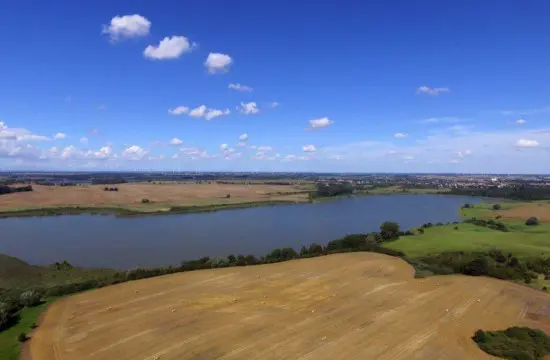Iowa farmers, commodity groups and researchers have their work cut out for them when it comes to reducing nutrient run-off from agricultural land. But, while the goals seem lofty, they can be achieved.
Water quality has been a topic of conversation and planning for several years now as states in the Mississippi River Basin work toward their goal of decreasing nutrient runoff by 45 percent. While the environmental challenge comes from multiple sources – including municipalities and corporations – a substantial portion of the land in the Mississippi River Basin is dedicated to agricultural production. As such, farmers in Iowa have taken the lead in developing strategies that aim to reduce the loss of nitrogen and phosphorus to the environment.
Jim Jordahl, director of programs and operations for the Iowa Agriculture Water Alliance (IAWA), says there are five key methods that farmers can use right now to help decrease nutrient loss.
- Planting cover crops: Six years ago, there were only 10,000 acres of cover crops in Iowa. Today there are more than 500,000 acres. More improvement is needed as some experts say Iowa requires at least 12 million acres to gain about a 30 percent reduction in nitrogen and phosphorus runoff.
- Exercising nutrient management: Best practices, known as the 4Rs of nutrient management, involve applying fertilizer at the right time, place, source and rate to maximize the nutrients taken up by the crop while minimizing loss to the environment.
- Using no-till and strip-till: In these practices, soil and crop residue are left mostly undisturbed between harvest and planting. It takes a few years to see the soil health benefits of these practices, but growers utilizing them saw an average phosphorus loss reduction of 90 percent.
- Installing bioreactors and saturated buffers: The first edge-of-field bioreactor was installed in Iowa just 10 years ago. There are 60 currently installed, but approximately 120,000 are needed throughout the state.
- Cultivating and revitalizing wetlands: Wetlands have been shown to improve water quality by reducing nitrates by 52 percent. In addition to removing nutrients, wetlands provide habitat, recharge groundwater, reduce flooding downstream by storing runoff and can provide recreational opportunities.
The Iowa Department of Agriculture and Land Stewardship has been helping growers by demonstrating these practices in selected watersheds to raise awareness.
Moving to the next stages of implementation across all of Iowa won’t be easy.
“We’ve got to be able to envision and enable the infrastructure that this undertaking needs,” says Jim. “We’re talking about seed, trucks and airplanes to deliver the supplies necessary, and the expertise needed to get the greatest benefit for each dollar spent.”
It won’t be cheap either. An estimated $1-4 billion in implementation costs and $77 million-1.2 billion in annualized costs will be needed to maintain this initiative.
JIM JORDAHL, IOWA AGRICULTURE WATER ALLIANCE DIRECTOR OF PROGRAMS AND OPERATIONS, INSPECTS A SATURATED BUFFER INSTALLATION NEAR PERRY, IOWA.
With lower commodity prices on everyone’s mind, it can be tough to get buy-in on projects that sound like they might be an upfront expense to the grower. So the IAWA is putting its focus on the educational and outreach pieces of the puzzle.
“We’re working with partners to demonstrate how these practices can improve soil health, help growers increase yield and help with resilience to flooding or drought,” says Jim. “So we’re putting our efforts on events that pull people together so they can learn from each other and take part in these discussions.”
By bringing farmers together with each other and with industry leaders, the IAWA hopes that they can spread the word about how these practices can benefit the grower and the agricultural industry as a whole, while protecting our waterways and the people and wildlife that depend on them for years to come.


